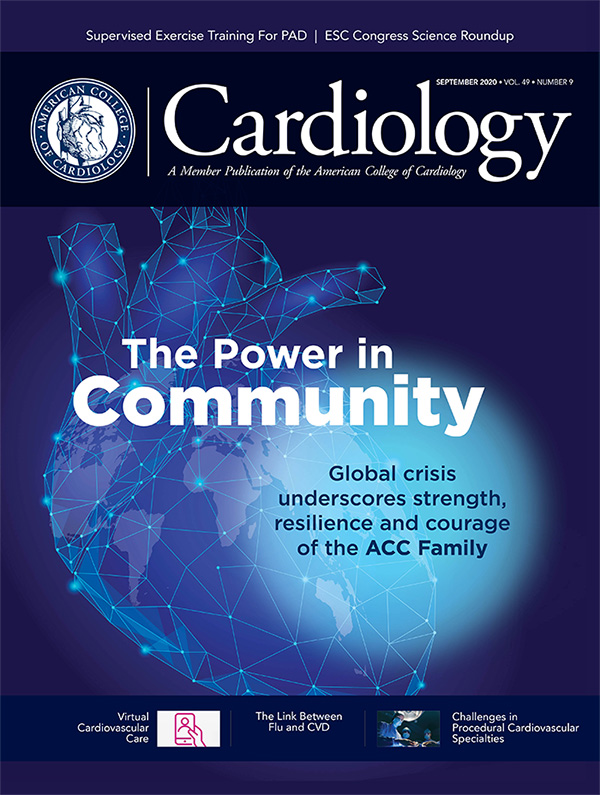Feature | New Science From ESC Congress 2020
The global science community again came together during the European Society of Cardiology Congress 2020 – The Digital Experience, leaving us all new clinical and research insights to discuss, consider and bring into clinical practice and inform further research in cardiovascular disease.

More on SGLT2 Inhibitors For Heart Failure…and Kidney Disease!
The EMPEROR-Reduced trial created a stir when topline results released at the end of July showed that treatment with the SGLT2 inhibitor (SGLT2i) empagliflozin met its primary endpoint: a composite of cardiovascular death or heart failure (HF) hospitalization.
One question that lingered was how much did empagliflozin reduce risk, especially given the 25% reduction in cardiovascular death, HF hospitalization, and urgent HF visits reported in DAPA-HF.
The full results of EMPEROR-Reduced were presented at an ESC Congress 2020 Hot Line session and showed that, during a median follow-up of 16 months, the primary outcome event rates were 19.4% for empagliflozin and 24.7% for placebo, translating into a relative risk reduction of 25% (hazard ratio, [HR], 0.75; p<0.001). Those with and without diabetes benefited similarly from empagliflozin.
The total number of hospitalizations was reduced with empagliflozin (HR, 0.70; p<0.001), but no significant difference was seen in all-cause death (HR, 0.92; p=NS). Adverse renal outcomes were also significantly reduced (HR 0.50; p<0.01), but uncomplicated genital tract infections were more frequent.
In comments to the media, Milton Packer, MD, FACC, called these findings "clearly practice changing" particularly when considered along with the findings of the DAPA-HF trial.
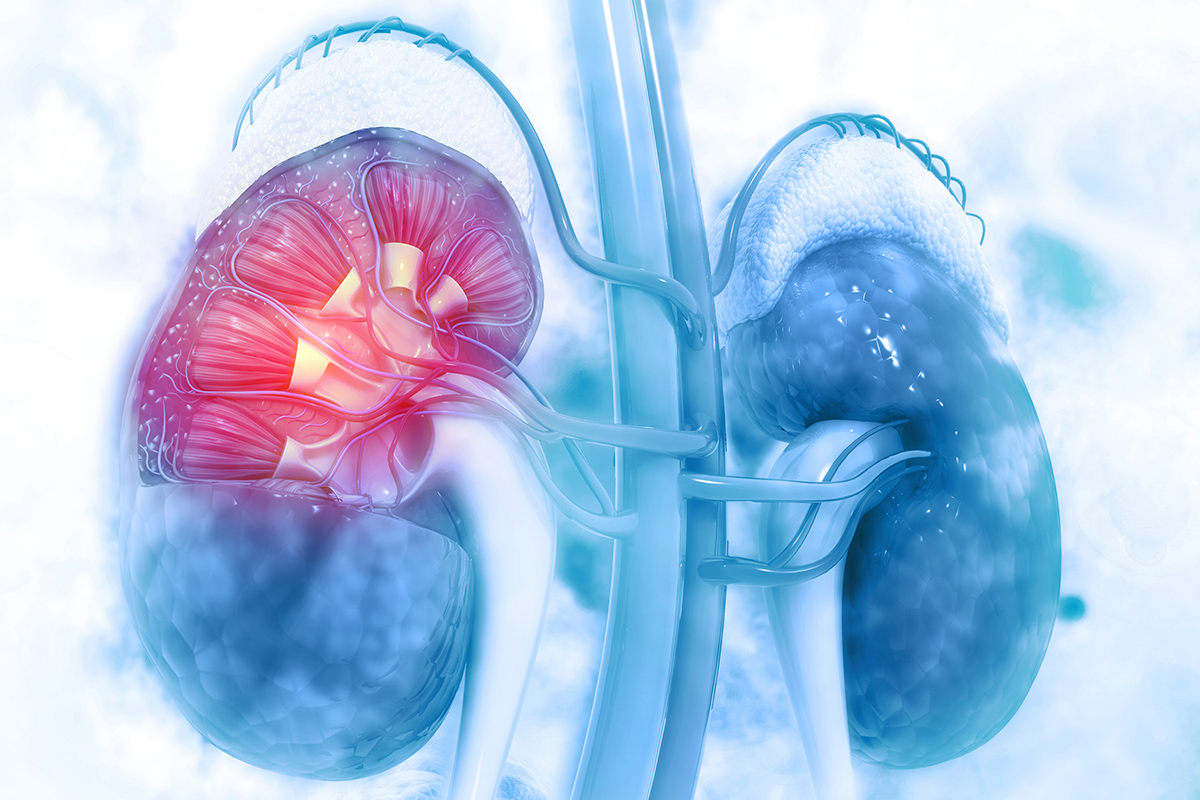
Asked how many patients might benefit from these findings, his response was blunt:
"It depends on whether physicians are paying attention…If they don't prescribe these drugs, then no patients will benefit. We have a real challenge in treating heart failure that many physicians …are treating [heart failure patients] in a way which resembles the state-of-the art 15 years ago…The determination as to how many patients will benefit? It would be thousands, hundreds of thousands..."
"The results of EMPEROR-Reduced, when combined with what we have learned from DAPA-HF over the past year, firmly establish SGLT2i as a highly efficacious class of agents that achieve all of the key treatment objectives for patients with HFrEF – namely, they substantially reduce the risk of morbid events, and improve symptom burden and quality of life, while being well tolerated. Collectively, these two trials solidify SGLT2i as the "fourth pillar" of optimal disease-modifying therapy in HFrEF, in addition to beta-blockers, RAS blockers/ARNI, and MRAs," said Mikhail N. Kosiborod, MD, FACC.
Sean R. Pinney, MD, FACC, concurred and added, "The real challenge is figuring out how best to implement this new pharmacologic class whose mechanism of benefit is incompletely understood and which is traditionally viewed as being the domain of primary care physicians and endocrinologists. From the patient's perspective, although the expected benefits are enticing, adding an additional medication with some off-target effects and possible economic burdens will need to be carefully considered. The clinical guidelines committee will no doubt be considering all of these issues before providing informed and deliberate guidance to clinicians."
The results of EMPEROR-Reduced add more support for the role of SGLT2i to reduce risk across a wide range of cardiovascular risk in patients with diabetes, as articulated in the recent ACC Expert Consensus Decision Pathway focused on cardiovascular risk reduction in patients with diabetes," said James L. Januzzi Jr, MD, FACC, a study investigator and a member of ACC's Solution Set Oversight Committee. "Cardiovascular clinicians should be thinking of SGLT2i not only as glucose-lowering drugs, but agents that substantially reduce cardiovascular risk.
Not to be outdone, the dapagliflozin folks presented results from the DAPA-CKD trial at a Sunday hotline session. This trial showed that treatment with dapagliflozin prolonged survival and significantly reduced the risk of kidney failure, HF hospitalization and cardiovascular death in chronic kidney disease patients with or without type 2 diabetes (T2D).
Researchers randomized 4,304 patients – mean age, 61.8 years; 66.9% male; and 67.5% with T2D – to receive either dapagliflozin (10 mg/once daily) or placebo in addition to standard care.
All patients had an estimated glomerular filtration rate (eGFR) of ≥25 and ≤75 mL/min/1.73m2; urinary albumin to creatinine ratio between ≥200 mg/g and ≤5000 mg/g; and were on a stable, maximum tolerated dose of an ACE inhibitor or ARB (unless contraindicated) for at least four weeks. The trial was conducted at 386 centers in 21 countries.
The primary composite endpoint was worsening kidney function or onset of end-stage kidney disease, or death due to kidney disease or cardiovascular disease. Secondary endpoints included worsening kidney function or death from kidney failure, HF hospitalization or cardiovascular death, and all-cause mortality.
After a median follow-up of 2.4 years, results showed 197 primary endpoint events occurred in the dapagliflozin group compared with 312 in the placebo group. The HR for the primary endpoint was 0.61 (p=0.000000028).
The benefit of dapagliflozin on the primary endpoint was consistent in patients with and without T2D and the number needed to treat was 19 to prevent one primary outcome event after a median of 2.4 years.
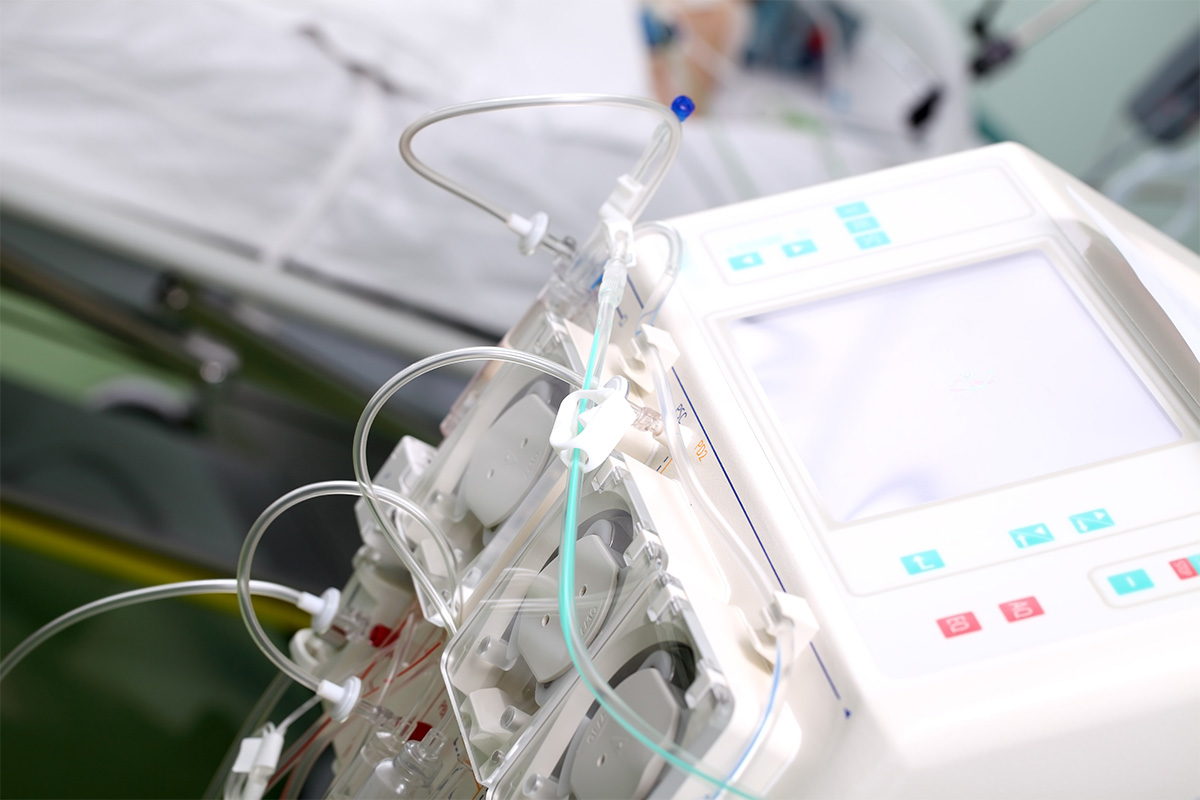
For a renal-specific endpoint of the need for chronic dialysis, kidney transplantation, or death from kidney failure, dapagliflozin significantly reduced this endpoint over placebo (HR, 0.66; p=0.0072).
Further, dapagliflozin reduced all three secondary endpoints compared with placebo. For the secondary outcome of all-cause mortality, dapagliflozin was also superior to placebo (101 events vs. 146 events; HR, 0.69; p=0.0035).
Similar findings were seen for the other two secondary endpoints: worsening renal function or death from kidney failure (HR, 0.56; p<0.0001) and hospitalization for HF or cardiovascular death (HR, 0.71; p=0.0089).
The proportion of patients who discontinued the study drug due to an adverse event or experienced a serious adverse event was similar across both groups.
Researchers noted that diabetic ketoacidosis was not reported in any patient randomized to dapagliflozin and occurred in two patients in the placebo group. Neither diabetic ketoacidosis nor severe hypoglycemia was observed in patients without T2D.
"The DAPA-CKD trial has shown dapagliflozin's potential as a long-awaited new treatment option for patients with chronic kidney disease," said principal investigator Hiddo J.L. Heerspink, PhD, with these benefits seen irrespective of the presence or absence of kidney disease. "The results highlight the medicine's potential to benefit patients with chronic kidney disease who are in need of improved treatment options."
HCM Gets a Targeted Drug That Reduces Myocardial Contractility
Mavacamten performed well in the EXPLORER-HCM trial, reducing all primary and secondary endpoints in 251 patients with obstructive hypertrophic cardiomyopathy (HCM) and a left ventricular outflow tract (LVOT) gradient ≥50 mm Hg and NYHA class II or III symptoms.
Mavacamten is a first-in-close targeted myosin inhibitor designed to treat the hypercontractility seen in obstructive HCM. The drug has shown promise in both obstructive and nonobstructive HCM.
EXPLORER-HCM was a phase 3, multicenter trial conducted at 68 clinical centers in 13 countries. The primary endpoint, which favored mavacamten over placebo (37% vs. 17%, difference +19.4%; p=0.0005), was a complicated one: a ≥1.5 mL/kg per min increase in peak oxygen consumption (pVO2) and at least one NYHA class reduction or a ≥3.0 mL/kg/min increase in pVO2 with no NYHA class reduction.
Even more promising for this new drug was that 20.3% of mavacamten-treated patients met both criteria, as compared with 7.8% of placebo patients (p=0.0005).
Mavacamten showed good tolerability, with a 97% completion rate through 30 weeks of treatment and no signals regarding safety. Treated patients also saw significant reductions in post-exercise LVOT, and greater improvements in PVO2 and symptoms scores.
Exploratory endpoints, including complete response (defined as NYHA class I and all LVOT gradients <30 mm Hg; 27.4% vs. 0.8%; p<0.0001) and cardiac biomarker measures, both favored treatment with mavacamten.
In presenting these "landmark" findings on the first targeted treatment for HCM, Iacopo Olivotto, MD, got a bit philosophical.
"When I started as a cardiologist, I would never have thought that I would have worked very hard for a long time on a drug that actually works at reducing the contractility of heart."
He went on to note these findings are the result of more than 60 years of "trying to understand and cure hypertrophic cardiomyopathy."
Based on these findings mavacamten was granted breakthrough therapy designation from the U.S. Food and Drug Administration in late July.
"Maybe" Something For HFpEF?
Good news in HFrEF is always welcome, but given that heart failure with preserved or mid-range ejection fraction (HFpEF, HFmEF) account for more than half of all heart failure cases, the unmet need is real and palpable.
Unfortunately, while treatment with sacubitril/valsartan reduced N-terminal pro B-type natriuretic peptide (NT-proBNP) in these patients, it did not improve functional capacity compared with individualized background therapy, according to findings from the PARALLAX trial.
PARALLAX sought to test the effects of sacubitril/valsartan compared to optimized individual medical therapy (IMT) for comorbidities. A total of 2,572 HFpEF patients (mean age, 72.5 years; 50% female; mean left ventricular ejection fraction, 56%) were randomly assigned to either sacubitril/valsartan or optimal IMT (enalapril, valsartan or placebo if not taking a RAAS inhibitor).
For the first primary endpoint – the change from baseline to 12 weeks in plasma NT-proBNP – sacubitril/valsartan was superior to IMT, with a significant 16.4% greater reduction seen in NT-proBNP at 12 weeks (p<0.001).
However, for the second primary endpoint – the change in six-minute walk distance from baseline to 24 weeks – no difference was seen between groups (adjusted mean difference, –2.5 m; p=0.24).
In a post hoc analysis, first hospitalization for HF and composite of time to cardiovascular death or HF hospitalization both favored sacubitril/valsartan (p<0.05). The researchers also noted there was a significantly lower decline in renal function at 24 weeks in the sacubitril/valsartan arm (p=0.015).
"These results are consistent with the findings from PARAGON-HF (LVEF ≥45%) and provide further evidence for the potential benefits of sacubitril/valsartan in patients with HF and mid-range or preserved ejection fraction," said principal investigator Burkert Pieske, MD, FACC.
Session moderator, Frank Ruschitzka, MD, called the trial's findings not a clear "win" but "a clear maybe, maybe."
Optimal Anticoagulation Post TAVI Becoming Better Defined
The optimal anticoagulation strategy after transcatheter aortic-valve implantation (TAVI) has not been well studied. Current guidelines (and many operators) default to a PCI-type strategy of dual antiplatelet therapy with clopidogrel and aspirin for three to six months for their patients without another indication for oral anticoagulation. The POPULAR-TAVI trial may just upend that recommendation.
"Aspirin alone as compared to aspirin with clopidogrel reduced the bleeding rate significantly, with an absolute reduction of more than 10%," said coordinating investigator Jorn Brouwer, MD.
"Aspirin alone should be used in patients undergoing TAVI who are not on oral anticoagulation and have not recently undergone coronary stenting," he concluded.
The study was a randomized, controlled trial that included 665 patients (mean age, 80 years; 48.7% female) undergoing TAVI with no indication for long-term anticoagulation. Participants were randomly assigned to receive aspirin alone or in combination with clopidogrel for three months.
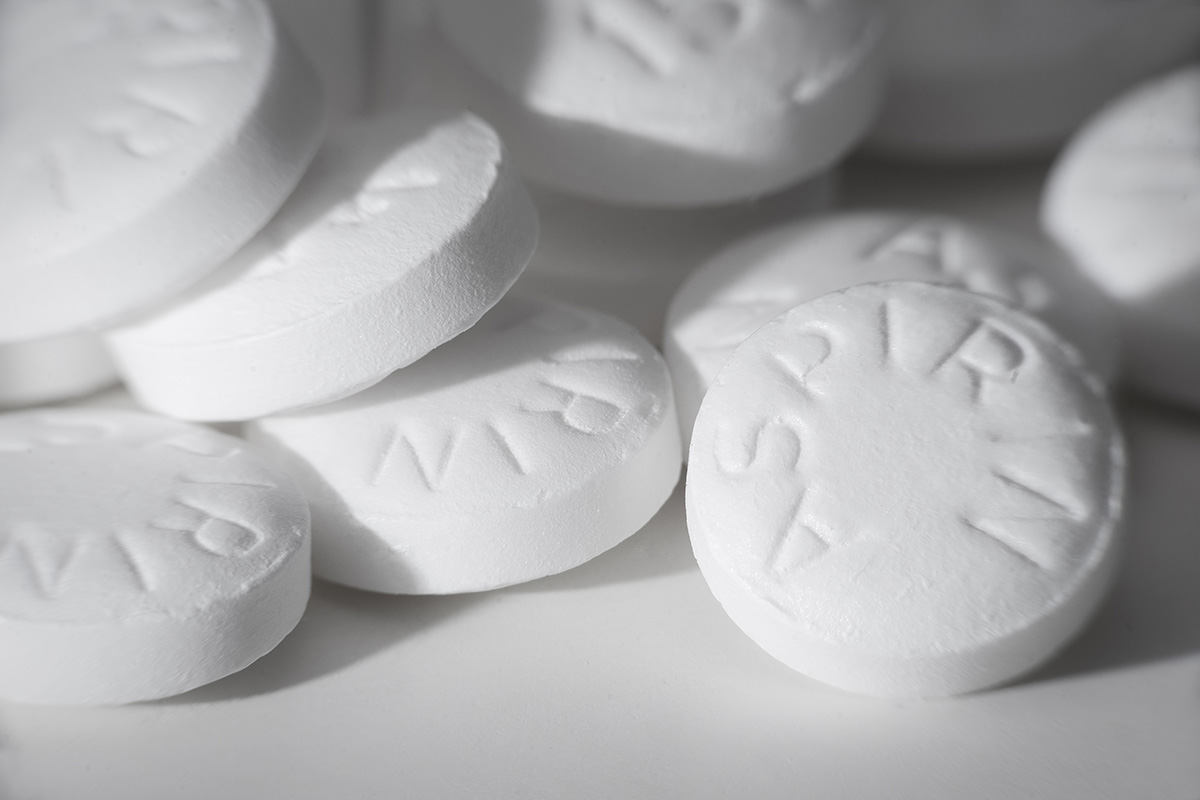
The two primary outcomes were all bleeding (including minor, major, and life-threatening or disabling bleeding) and non–procedure-related bleeding over a period of 12 months. Most bleeding at the TAVI puncture site was counted as non–procedure-related.
With aspirin alone, the overall bleeding rate was 15.1% at one year, as compared with 26.6% for combination therapy (risk ratio, 0.57; p=0.001). Most bleeding (58.0% for aspirin and 53.9% for aspirin plus clopidogrel) was seen at the access site.
A secondary composite cardiovascular event (death from cardiovascular causes, non–procedure-related bleeding, stroke, or myocardial infarction [MI]) also favored aspirin alone (23.0% vs. 31.1% for combination therapy; difference, −8.2 percentage points; p-value noninferiority <0.001; risk ratio, 0.74; p-value superiority = 0.04).
For the composite endpoint of death from cardiovascular causes, ischemic stroke, or MI, the rates were similar at 9.7% and 9.9%, respectively (p=0.004 for noninferiority and p=0.93 for superiority).
Commenting to ESC participants, Anna Sonia Petronio, MD, said these data, along with data from earlier trials, "simplify and clarify some aspects of the TAVI treatment that were terribly empirical until now because we kept using the traditional coronary artery treatment of a few years ago for TAVI procedures."
Routine Use of Trimetazidine Post PCI Flunks
Routine use of oral trimetazidine added to guideline-recommended medical therapy did not improve patient outcomes following a successful PCI, based on findings from the ATPCI trial presented by Roberto Ferrari, MD. However, the drug was not associated with any safety concerns.
ATPCI randomly assigned 6,007 patients after recent PCI (either elective PCI for stable angina or urgent PCI for unstable angina of NSTEMI to either trimetazidine (35 mg twice daily) or placebo. Participants were enrolled at 365 centers in 27 countries across Europe, South America, Asia and North Africa.
After a median follow-up of 47.5 months, the incidence rate for the primary endpoint (a composite of cardiac death, hospitalization for a cardiac event, recurrent/persistent angina leading to adding, switching or increasing the dose of antianginal drugs, or coronary angiography) was 23.3% for the trimetazidine-treated group compared with 23.7% for placebo.
There were similarly no between-group differences in the incidence of the individual components of the primary endpoint. The findings were similar for those who underwent elective and urgent PCI, and adverse event rates were also similar.
The prevalence of angina after successful PCI was lower than expected, at 15.1% in the trimetazidine group after one year and 9.8% at the end of follow-up, with no difference between treatment groups.
"The take home message is that the patients with stable angina or NSTEMI receiving optimize medical therapy, as suggested by the guidelines, and combined with a successful PCI have a low event rate and no reoccurrence of angina. And that is new because as you remember, it was said that these patients, after one year or five years, there is a recurrence of angina, and we did not find that," said Ferrari.
"Also, the improvement of cardiac metabolism with trimetazidine did not improve the outcome, and, therefore, this drug is not necessary in this population," he concluded.
BP-Lowering Prevents MI, Stroke Regardless of Starting BP Level
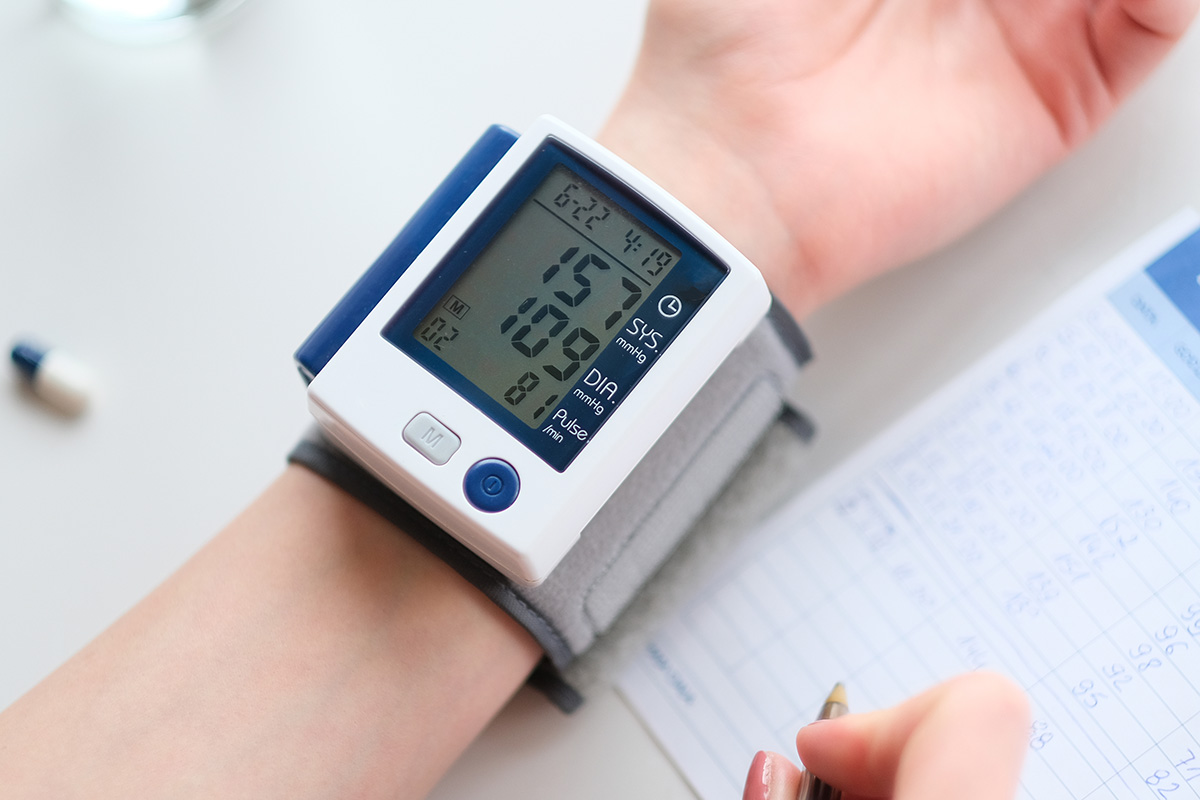
Blood pressure- (BP-) lowering can prevent MI and stroke even in people with normal BP, based on new research from the BPLTTC trial presented by principal investigator Kazem Rahimi, MD.
"Greater drops in blood pressure with medication lead to greater reductions in the risk of heart attacks and strokes," said Rahimi. But before running out to buy stock in antihypertensives, he added a note of restraint: "The fact that the relative effects are similar for everyone does not mean that everyone should be treated."
The researchers conducted a meta-analysis of data from 348,854 participants from 48 clinical trials and divided participants into two groups: those with a prior diagnosis of cardiovascular disease and those without.
Each group was then further divided into seven subgroups based on systolic BP at study entry (10 mm Hg increments from <120 to 170 mm Hg and above).
Overall, with a mean follow-up of four years, results showed a reduction in the relative risk of major cardiovascular events of roughly 10% for each 5 mm Hg reduction in systolic BP. Risk for stroke, ischemic heart disease, HF, and death from cardiovascular disease were reduced by 13%, 7%, 14%, and 5%, respectively.
According to Rahimi, there was no evidence that proportional effects varied by baseline BP values, down to the lowest systolic BP category of <120 mm Hg, or in both primary and secondary prevention settings.
Based on the study's findings, Rahimi suggested the decision to prescribe an antihypertensive should not be based simply on a prior diagnosis of cardiovascular disease or an individual's current BP, but rather used as "risk modifying treatments for prevention of incident or recurrent cardiovascular events, regardless of BP values at baseline."
Suspend RAAS Inhibitors in COVID-19?

Temporarily suspending use of ACE inhibitors and ARBs did not show clinical benefit in patients hospitalized with mild to severe COVID-19, according to findings from the BRACE CORONA trial presented in a Hot Line session by Renato Lopes, MD, PhD, FACC.
Researchers enrolled 659 patients chronically using an ACE inhibitor or ARB from 29 sites in Brazil who were hospitalized with COVID-19. These patients were randomly allocated to stopping the ACE inhibitor/ARB for 30 days or continuing the ACE inhibitor/ARB.
Of note, patients using more than three antihypertensive drugs, using sacubitril/valsartan, or who were hemodynamically unstable at presentation were excluded from the study.
Findings showed the average number of days alive and out of hospital (the primary outcome) was 21.9 days for patients who stopped ACEi/ARBs and 22.9 days for patients who continued these medications (p=0.09). Thirty-day mortality was 2.8% vs. 2.7%, respectively (p=0.95).
"This is the first randomized data assessing the role of continuing versus stopping ACE inhibitors and ARBs in patients with COVID-19," said Lopes.
"Because these data indicate that there is no clinical benefit from routinely interrupting these medications in hospitalized patients with mild to moderate COVID-19, they should generally be continued for those with an indication."
All Things Colchicine
An inexpensive gout medication is getting a lot of attention in the cardiology world these days, but not all the data are perfectly positive, so some deep diving and perspective are needed.
LoDoCo2 was one of the most anticipated trials presented at ESC Congress 2020 and the results did not disappoint: treatment with low-dose colchicine (0.5 mg daily) was associated with a reduction in cardiovascular events in individuals with chronic coronary disease, with broad and consistent effects across a range of clinical subgroups.
But there were caveats, one of which is related to a smaller colchicine trial called COPS that was presented at a pre-meeting Late Breaking Science session and simultaneously published in Circulation.
COPS
The Australian COPS trial enrolled 795 patients with acute coronary syndromes (ACS) and randomly assigned them to either colchicine 0.5 mg twice daily for one month, followed by 0.5 mg daily for 11 months, or matching placebo.
The trial showed that colchicine did not improve cardiovascular outcomes at 365 days compared with placebo in patients with ACS, with a concerning excess in non-cardiovascular mortality seen with colchicine, reported principal investigator Jamie Layland, MD, PhD.
The rates of the one-year composite of death from any cause, ACS (STEMI/NSTEMI/unstable angina), ischemia-driven urgent revascularization and non-cardioembolic ischemic stroke, were 6.1% for colchicine and 9.5% for placebo, with a nonsignificant p-value of 0.09. This difference reached statistical significance at 400 days of follow-up (24 vs. 41 events; p=0.047).
Of the individual components of the primary endpoint, only urgent revascularization favored colchicine (3 events vs. 12 events; p=0.037). There was a numeric but not significant reduction in recurrent ACS (11 vs. 20; p=0.13), and, as noted above, there was a higher rate of all-cause mortality (8 vs. 1; p = 0.047) and noncardiovascular death (5 vs. 0; p = 0.023) seen with colchicine.
"It's possible the higher death rate, [as compared to COLCOT], although small, did reflect the higher dosing schedule, but it most likely represents the shorter duration of follow-up and the smaller sample size," said Layland. It nevertheless warrants further study.
Writing about the COPS results for ACC.org, Dharam Khumbani, MD, FACC, noted, "These are interesting findings. COLCOT was a larger trial that showed a benefit in ischemic outcomes among a similar high-risk population. In that trial, there was a neutral effect on death (1.8% vs. 1.8%) and benefit was predominantly driven by a reduction in urgent revascularizations."
COLCOT Time-to-Treatment
Also presented during that same session was a time-to-treatment initiation analysis from COLCOT, by Nadia Bouabdallaoui, MD, and published simultaneously in the European Heart Journal.
In COLCOT, patients were randomized to colchicine or placebo within 30 days post myocardial infarction (MI). The researchers found that those started on the drug earlier in their hospital stay (Days 1-3) saw a greater reduction in the primary composite endpoint of cardiovascular death, MI, stroke, resuscitated cardiac arrest, or urgent hospitalization for unstable angina leading to revascularization compared with placebo (hazard ratio [HR], 0.52; p<0.007), as compared with those who started later, where the benefit was no longer significant compared with placebo (HR for Days 4 and 7 = 0.96, 95% CI, 0.53-1.75 and HR for > day 8 = 0.82, 95% CI, 0.61–1.11).
"Early initiation of colchicine led to a 48% relative reduction in the primary efficacy endpoint vs. placebo after a mean follow-up of 22.7 months," reported Bouabdallaoui. The benefit was mainly driven by a lower rate of MI, stroke, and urgent need for coronary revascularization, with no difference in cardiovascular death seen.
"We believe that our results support early, in-hospital initiation of adjunctive therapy with colchicine for post-MI prevention," she concluded.
LoDoCo2
Moving forward a few days to a Monday Hot Line session and from the acute setting to the chronic setting, and the LoDoCo2 results were presented live. The trial enrolled 5,522 patients with stable coronary disease of at least six-months duration and randomly assigned them to receive 0.5 mg of colchicine once daily or matching placebo.
Mean age was 66 years and 85% of participants were male. Over 90% were receiving single- or dual-antiplatelet therapy at baseline and 97% were receiving a lipid-lowering agent.
The primary endpoint was a composite of cardiovascular death, spontaneous (nonprocedural) MI, ischemic stroke or ischemia-driven coronary revascularization. Over a median duration follow-up of 28.6 months, the primary event rates were 6.8% for colchicine and 9.6% for placebo (2.5 events vs. 3.6 events/100 person-years; HR, 0.69; p<0.0001).
The benefits of colchicine were consistent across the majority of clinical subgroups examined.
The key secondary endpoint, a composite of cardiovascular death, spontaneous MI or ischemic stroke, also favored colchicine (4.2% vs., 5.7% for placebo; HR, 0.72; p=0.007). There were no differences in the rates of all-cause death, cardiovascular death or ischemic stroke between groups.

However, a small increase in noncardiovascular death was seen with colchicine (53 vs. 35 events; 0.7 events/100 person-years vs. 0.5 events/100 person-years; HR, 1.51; 95% CI, 0.99-2.31). Overall, serious adverse events were low and similar between groups.
The drug was generally well tolerated, with similar numbers of patients in each group permanently discontinuing their treatment due to perceived side effects.
In his presentation of the findings, principal investigator Mark Nidorf, MD, noted that although the signal for increased infection seen in CANTOS and COLCOT was not seen in this trial, chest infections remain a concern in these patients given the known interaction between colchicine and clarithromycin.
"If we are to use this drug widely, clinicians will need to learn how to use this drug and what drugs to avoid, and that's an important teaching point," he said.
In summary, though, he said: "LoDoCo2 provides strong evidence to support repurposing colchicine for routine secondary prevention in patients with chronic coronary disease," noting the magnitude of colchicine's effect on cardiovascular outcomes was consistent with that found in the CANTOS and COLCOT trials.
"The benefits were seen soon after initiating therapy, continued to accrue over time, and were observed patients already receiving other effective prevention therapies," reported Nidorf.

Asked about the higher rate of noncardiovascular death, Nidorf noted the trend was nonsignificant and there was no signal with respect to any specific cause of noncardiovascular death. "The causes of death were disparate, and the difference did not appear related to infection or cancer."
"Hopefully more data from controlled trials will help address this with more certainty, however given the low incidence of noncardiovascular death, providing more certainty will require data from many tens of thousands of patient life years," he added.
Peter Libby, MD, FACC, had a more cautious response: "Taken alone, I had interpreted the LoDoCo2 mortality signal as a play of chance and nonsignificant, but in the context of the COPS trial, which did use a higher dose of colchicine [0.5 mg twice daily for the first month and then 0.5 mg daily], I think we need to keep our eyes open about this issue and learn more."
Echoing this, ACC.org Editor-in-Chief Kim A. Eagle, MD, MACC, said the increase in noncardiovascular death is a concern and a reason for more trials "to be confident that the risk-to-benefit ratio favors using this agent."
The trial also had another important limitation, noted clearly by the researchers in their presentation and subsequent publication in the New England Journal of Medicine, namely the very low percentage of women enrolled.
At 15%, this is well below what would be expected given the percentage of women with chronic coronary disease in the general population and raises the question of whether these findings are generalizable to women.
"Although it is reassuring that the subgroup analysis showed the effect of therapy was directionally consistent for men and women, clearly more data are needed to confirm the sense that women will benefit from therapy as much as men," said Nidorf.
"However, the benefits of therapy were also seen in diabetic patients, as well as those with hypertension and prior events, so it is reasonable not to deny women a trial of therapy because they are women as that may introduce a negative bias by not prescribing effective therapies to women – as is already evident with the use of statins. Further there is no evidence that women are more exposed to harm from low dose therapy," he noted.

As for how colchicine might be adopted into clinical practice, Nidorf suggested the path might be different than the usual for a "new" medication in that there will be no efforts by "big pharma" to disseminate the data and drive use. With that, however, "the 'cost' of trialing colchicine is low, and in the 8-10% who have early intolerance, the symptoms are generally mild and self-limiting.
"In those who do not experience early untoward effects, long-term tolerance is very good," said Nidorf. Also, the evidence shows that low-dose colchicine is safe in children, teenagers and during pregnancy and has no known effect on fetal development.
One issue that bears mention, he noted, is that the lowest dose available in Australia and Europe is 0.5 mg – the dose tested in this trial and COLCOT – but in the U.S., the lowest dose is 20% higher at 0.6 mg.
"The lower dose may well be important for safety especially in terms of reducing the risk of important drug interactions, which doctors who already use colchicine for gout, should be aware of," said Nidorf.
"During the run-in phase of the trial, we learned that the risk of early side effects can be substantially reduced if therapy is introduced at 0.25 mg daily and then increased to 0.5 mg daily after one week."
COVID-19 and Cardiovascular Disease

A series of Late-Breaking Science presentations presented at ESC Congress 2020 addressed new research pertaining to COVID-19 and cardiovascular disease, including a study looking at the prevalence of cardiovascular risk in hospitalized COVID-19 patients, as well as the quality of research published in three major medical journals, respectively.
In the study on cardiovascular risk, Manan Pareek, MD, PhD, and Avinainder Singh, MD, et al., analyzed data from the Yale COVID-19 Cardiovascular Registry to determine the prevalence of cardiovascular risk factors, established cardiovascular disease, and associated medications in COVID-19 patients.
They also looked to identify risk factors for incident cardiovascular events and mortality. Of the 485 patients included in the study, 46% were female, 49% were White, 27% were Black and 16% were Hispanic.
Nearly half of patients were on statins, while close to 40% were on ACE inhibitors or ARBs, beta-blockers, and/or aspirin.
Pareek and colleagues noted an overall high baseline of cardiovascular risk, as well as high mortality and risk of cardiovascular complications. Additionally, cardiovascular disease and biomarkers predicted poor outcomes.
In the other study of research published in major medical journals, Giulio Stefanini, MD, PhD, MSc, and colleagues used PubMed to compare original research articles published in the New England Journal of Medicine (NEJM), Lancet and the Journal of the American Medical Association (JAMA) from Jan. 1 to April 30, 2019 and from Jan. 1 to April 30, 2020.
Articles were assessed based on four parameters:
- Use of randomized design
- Defined primary hypothesis
- Defined primary endpoint
- GRADE
The study findings suggest that quality of evidence published in major medical journals were lower in 2020 compared with 2019, largely due to COVID-19. However, the authors observed no impact on cardiovascular research.
"Our findings underscore the need for a rigorous peer-review process and a balanced interpretation of findings during public emergencies to avoid a potential detrimental effect on clinical management," Stefanini said.
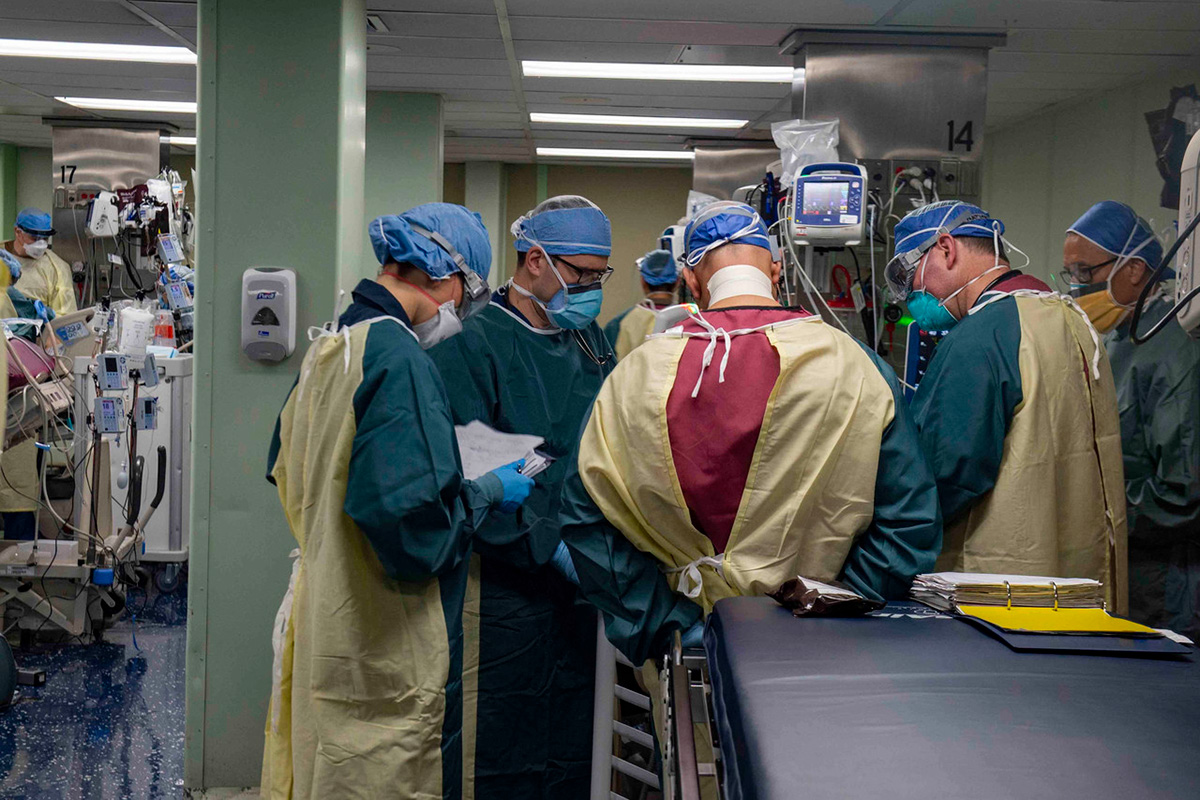
Limitations of the study included the focus on only three medical journals and the four-month timeline when available knowledge on COVID-19 was limited.
While JACC Journals were not part of the study, JACC Editor-in-Chief Valentin Fuster, MD, PhD, MACC, noted significant increases ranging from 50% to 110% in submissions across the journals since the COVID-19 pandemic.
"We believe these increases resulted from science related to the virus itself, as well as the fact that some clinicians and researchers were social distancing and completing outstanding manuscripts," he said.
Fuster joined his counterparts from NEJM, JAMA and Circulation for a joint session on the challenges and opportunities for scientific journals in the digital world, where this was one of the topics discussed.
The ACC's COVID-19 Hub continues to include the latest clinical guidance, expert commentary, front-line perspectives, Quick Tip videos and more at ACC.org/COVID-19.
Additionally, the College's Summer COVID-19 Education Series features one-hour expert panel discussions on hot topics related to COVID-19, including navigating the latest research and best managing cardiovascular disease patients with COVID-19.
The entire series is available on demand for free at Virtual.ACC.org/cvcovid.
Clinical Topics: Acute Coronary Syndromes, Cardiac Surgery, Congenital Heart Disease and Pediatric Cardiology, COVID-19 Hub, Dyslipidemia, Heart Failure and Cardiomyopathies, Invasive Cardiovascular Angiography and Intervention, Noninvasive Imaging, Prevention, Stable Ischemic Heart Disease, Atherosclerotic Disease (CAD/PAD), ACS and Cardiac Biomarkers, Cardiac Surgery and Arrhythmias, Cardiac Surgery and CHD and Pediatrics, Cardiac Surgery and Heart Failure, Cardiac Surgery and SIHD, CHD and Pediatrics and Arrhythmias, CHD and Pediatrics and Imaging, CHD and Pediatrics and Interventions, CHD and Pediatrics and Prevention, CHD and Pediatrics and Quality Improvement, Lipid Metabolism, Nonstatins, Novel Agents, Statins, Acute Heart Failure, Heart Failure and Cardiac Biomarkers, Interventions and ACS, Interventions and Coronary Artery Disease, Interventions and Imaging, Interventions and Vascular Medicine, Angiography, Nuclear Imaging, Chronic Angina
Keywords: ACC Publications, Cardiology Magazine, Acute Coronary Syndrome, Adolescent, African Americans, American Medical Association, Angina, Stable, Adrenergic beta-Antagonists, Angiotensin-Converting Enzyme Inhibitors, Aspirin, Blood Pressure, Antihypertensive Agents, Cardiovascular Diseases, Cause of Death, Child, Brain Ischemia, Clarithromycin, Colchicine, Coronary Angiography, Coronary Artery Disease, COVID-19, Creatinine, Diabetes Mellitus, Type 2, Diabetic Ketoacidosis, Drug Repositioning, Emergencies, Enalapril, Follow-Up Studies, Glomerular Filtration Rate, Hispanic Americans, Heart Failure, Hydroxymethylglutaryl-CoA Reductase Inhibitors, Infant, Newborn, Incidence, Length of Stay, Myocardial Infarction, Natriuretic Peptide, Brain, ST Elevation Myocardial Infarction, Odds Ratio, Pandemics, Physicians, Primary Care, Pregnancy, Platelet Aggregation Inhibitors, Quality of Life, Prevalence, Risk Factors, Risk, Sample Size, Secondary Prevention, severe acute respiratory syndrome coronavirus 2, Sodium-Glucose Transporter 2, Stroke, Stroke Volume, Transcatheter Aortic Valve Replacement, Trimetazidine, Stroke Volume, Ursidae
< Back to Listings

